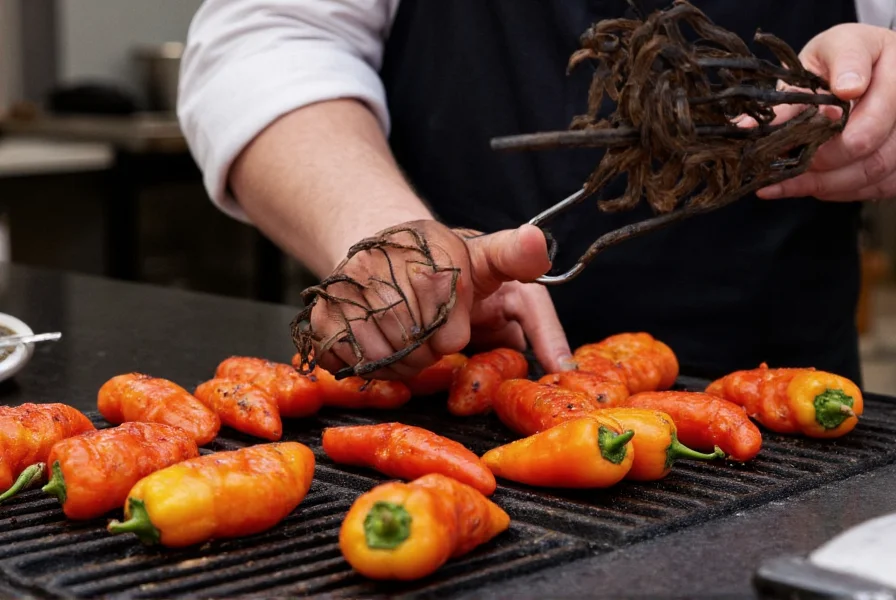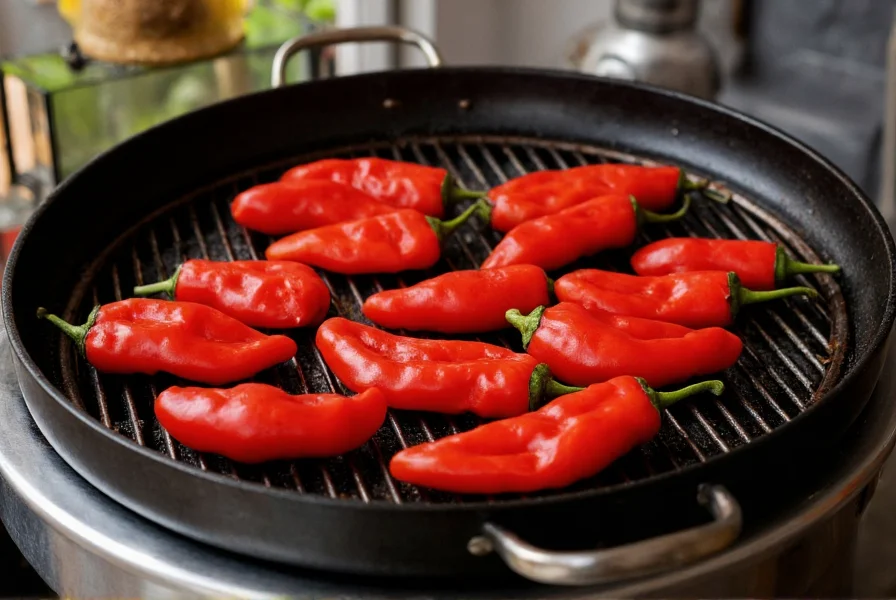Peppers transform dramatically when exposed to direct heat, developing complex flavors that raw preparation can't match. Whether you're working with sweet bell peppers, spicy jalapeños, or smoky poblanos, understanding the science behind pepper grilling ensures consistent success every time you fire up your grill.
Understanding Pepper Varieties for Grilling
Not all peppers behave the same under intense heat. Each variety has unique characteristics that affect grilling performance:
| Pepper Type | Best Grilling Method | Approximate Time | Texture Result |
|---|---|---|---|
| Bell Peppers (all colors) | Direct medium-high heat | 8-12 minutes | Tender with slight char |
| Jalapeños | Medium heat, indirect first | 10-15 minutes | Softened skin, retained heat |
| Poblanos | Medium heat, rotate frequently | 12-18 minutes | Blistered skin, creamy interior |
| Serranos | Medium-low heat | 6-10 minutes | Charred exterior, crisp-tender |
Proper Pepper Preparation Techniques
Successful pepper grilling begins long before they hit the grates. Proper preparation prevents common issues like sticking, uneven cooking, and excessive charring.
Cleaning and drying matters more than many realize. Residual moisture creates steam instead of desirable char marks. Pat peppers thoroughly dry with paper towels after washing. For thicker-skinned varieties like bell peppers, consider removing seeds and membranes before grilling to ensure even cooking.
Oil selection significantly impacts results. Use high smoke point oils like avocado or grapeseed oil (smoke point 400°F+) rather than olive oil which can burn at typical grilling temperatures. Apply oil sparingly using a pastry brush or oil mister to prevent flare-ups while ensuring even coverage.
Mastering Grill Temperature and Placement
Temperature control separates acceptable grilled peppers from exceptional ones. Most home grills lack precise temperature monitoring, leading to inconsistent results.
For gas grills, create two distinct zones: one at 400-450°F for initial searing and another at 300-350°F for finishing. Place peppers over direct heat first to develop char, then move to indirect heat to complete cooking without burning.
Charcoal grill users should arrange coals for similar two-zone cooking. Wait until coals are covered with gray ash before placing peppers on the grill. The ideal charcoal temperature for peppers ranges from 375-425°F—hot enough to char but not so hot that peppers cook too quickly.

Avoiding Common Pepper Grilling Mistakes
Even experienced grillers make preventable errors when working with peppers. Understanding these pitfalls improves results immediately:
- Overcrowding the grill - Peppers need space for proper air circulation. Crowded peppers steam instead of char, resulting in soggy texture.
- Excessive flipping - Allow 3-4 minutes between turns to develop proper char marks. Frequent flipping prevents desirable caramelization.
- Ignoring pepper thickness - Thicker peppers like bell varieties need longer cooking than thin-skinned varieties like serranos.
- Skipping the steam phase - After grilling, place peppers in a covered bowl for 10-15 minutes. This steaming loosens skins for easy removal.
Creative Uses for Grilled Peppers
Grilled peppers extend far beyond simple side dishes. Their complex flavor profile enhances numerous preparations:
For sauces and spreads, blend roasted red peppers with garlic, vinegar, and olive oil for a versatile romesco sauce. The natural sweetness balances acidity perfectly. Preserving grilled peppers in olive oil with herbs creates flavorful additions to sandwiches and antipasti platters.
When incorporating into main dishes, add grilled peppers during the last stages of cooking to preserve texture. They work particularly well in frittatas, grain bowls, and as pizza toppings where their concentrated flavor shines through.

Storage and Shelf Life Optimization
Proper storage extends the life of grilled peppers while maintaining quality. After the essential steaming phase, remove skins completely as they become bitter during storage.
Store peeled, grilled peppers in airtight containers with enough olive oil to coat them. The oil creates a protective barrier against oxidation. Refrigerated properly, grilled peppers maintain quality for 5-7 days. For longer storage, freeze in single layers before transferring to freezer bags, preserving them for up to 6 months without significant quality loss.
Frequently Asked Questions
Can you grill frozen peppers successfully?
Grilling frozen peppers directly produces uneven results with exterior burning and interior undercooking. Thaw peppers completely in the refrigerator overnight before grilling. This ensures even cooking and proper charring without excessive moisture causing steam instead of desirable char marks.
What's the best way to remove skins from grilled peppers?
After grilling, immediately place peppers in a covered bowl or sealed plastic bag for 10-15 minutes. This steaming phase loosens the skins significantly. Then, use your fingers to gently peel away the skin starting from the stem end. For stubborn areas, a soft vegetable brush under running water helps remove remaining skin without damaging the pepper flesh.
How do you prevent peppers from falling through grill grates?
Use a grill basket for smaller peppers or slice larger peppers into substantial pieces that won't slip through. Alternatively, thread pepper pieces onto skewers after partial grilling. Ensure grill grates are clean and properly preheated, as food sticks less to hot, clean surfaces. Lightly oiling both the peppers and the grates reduces sticking significantly.
Does grilling reduce the nutritional value of peppers?
Grilling actually enhances certain nutrients in peppers while preserving most vitamins. The heat breaks down cell walls, making antioxidants like carotenoids more bioavailable. While some vitamin C degrades with heat, peppers contain such high concentrations that grilled versions still provide substantial amounts. The key is avoiding excessive charring, which can create harmful compounds, so moderate grilling preserves nutritional benefits while improving flavor.
Can you grill stuffed peppers successfully?
Yes, but with technique adjustments. Pre-grill stuffed peppers over indirect heat at 350°F to cook the filling without burning the exterior. After the filling is nearly done, move to direct heat for 2-3 minutes to develop char marks. Cover stuffed peppers with foil during the initial cooking phase to prevent drying out. This two-stage method ensures properly cooked fillings with beautifully grilled exteriors.











 浙公网安备
33010002000092号
浙公网安备
33010002000092号 浙B2-20120091-4
浙B2-20120091-4